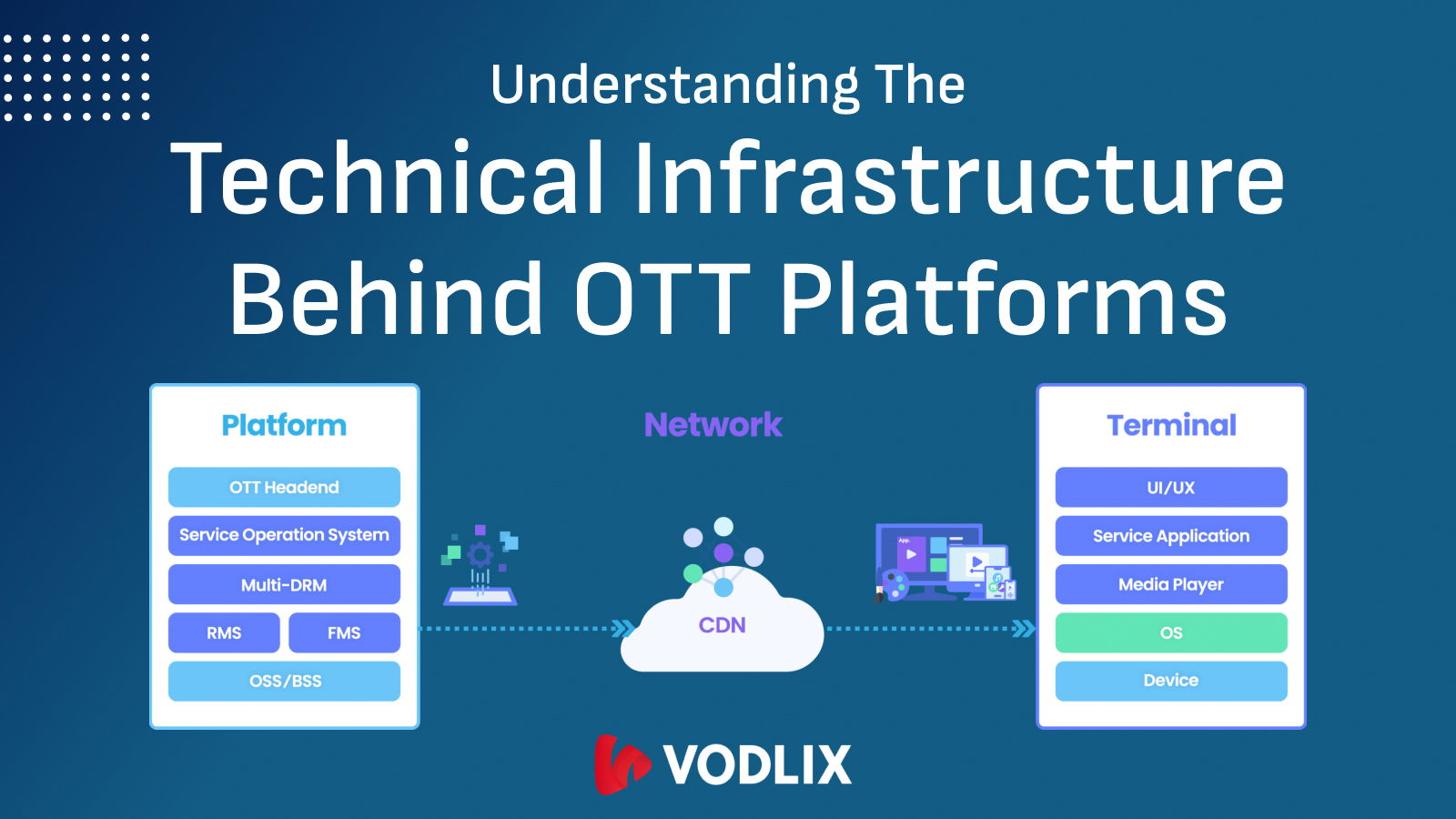Over-The-Top (OTT) platforms have revolutionized how audiences consume content. These platforms deliver video and audio content directly over the internet, bypassing traditional distribution channels. Behind their seamless streaming experiences lies a sophisticated technical infrastructure that ensures reliable delivery, high-quality playback, and personalized user experiences. In this comprehensive guide, we delve into the intricate technical aspects that power OTT platforms, offering insights into their architecture, scalability, and the technologies driving their success.
The Architecture of OTT Platforms
1. Content Delivery Networks (CDNs)
CDNs play a pivotal role in OTT platform architecture by optimizing content delivery. They distribute content across geographically dispersed servers, reducing latency and buffering. This ensures that viewers experience smooth playback regardless of their location, enhancing user satisfaction.
2. Video Encoding and Transcoding
Video encoding converts raw video files into digital formats suitable for streaming over the internet. Transcoding further optimizes video files into multiple bitrates and resolutions, allowing adaptive bitrate streaming. This adaptive streaming adjusts video quality based on the viewer's internet speed and device capabilities, ensuring uninterrupted playback.
3. Digital Rights Management (DRM)
DRM technology protects content from unauthorized access and piracy. OTT platforms use DRM systems to encrypt video streams, manage access rights, and enforce content licensing agreements. This safeguards content while providing a secure viewing experience for subscribers.
Scalability and Performance Optimization
1. Cloud Infrastructure
Many OTT platforms leverage cloud computing to achieve scalability and flexibility. Cloud services provide on-demand resources for storage, processing power, and global content distribution. This scalability enables platforms to handle fluctuations in viewer traffic and maintain high-performance streaming during peak periods.
2. Load Balancing
Load balancing distributes incoming viewer requests across multiple servers or data centers. It optimizes resource utilization and ensures that no single server becomes overloaded, thereby preventing downtime and maintaining consistent streaming performance.
3. Analytics and Monitoring
Real-time analytics and monitoring tools are essential for maintaining the health and performance of OTT platforms. These tools track key metrics such as bitrate consumption, buffering incidents, and viewer engagement. Insights gained from analytics help optimize infrastructure resources and enhance the overall streaming experience.
Key Technologies Driving OTT Platform Innovation
1. Content Personalization Algorithms
Advanced algorithms analyze viewer behavior, preferences, and historical data to deliver personalized recommendations. These algorithms power content discovery features, increasing viewer engagement and retention by suggesting relevant content based on individual preferences.
2. Interactive Features and UX Design
Interactive features such as interactive ads, live streaming, and social media integration enhance user engagement. UX design focuses on intuitive navigation, seamless playback, and accessibility across devices. These elements collectively improve user satisfaction and drive platform loyalty.
3. Security and Compliance
Ensuring robust security measures and compliance with industry regulations is paramount for OTT platforms. Encryption protocols, secure APIs, and regular security audits mitigate risks associated with data breaches and ensure user data protection.
Future Trends and Innovations in OTT Technology
1. AI and Machine Learning
AI and machine learning technologies are poised to revolutionize OTT platforms further. Predictive analytics, content recommendation engines, and automated content tagging are examples of AI applications that enhance content discovery and viewer engagement.
2. 5G and Edge Computing
The rollout of 5G networks and advancements in edge computing will facilitate faster streaming speeds and reduced latency. OTT platforms will capitalize on these technologies to deliver immersive experiences such as augmented reality (AR) and virtual reality (VR) content.
3. Blockchain for Content Distribution
Blockchain technology offers decentralized content distribution, transparent rights management, and secure micropayments. OTT platforms exploring blockchain solutions aim to streamline content licensing, reduce distribution costs, and enhance transparency in royalty payments.
Conclusion
Understanding the technical infrastructure behind OTT platforms is crucial for stakeholders in the digital entertainment industry. From CDN optimization to AI-driven personalization, each component plays a pivotal role in delivering seamless streaming experiences to global audiences. As technology continues to evolve, OTT platforms must innovate and adapt to meet growing consumer expectations for high-quality, on-demand content.
By embracing scalable cloud solutions, leveraging AI-driven insights, and prioritizing security, OTT platforms can differentiate themselves in a competitive market. As consumers demand more personalized and immersive content experiences, staying at the forefront of technological advancements will be key to sustaining growth and captivating audiences worldwide.


.png)




